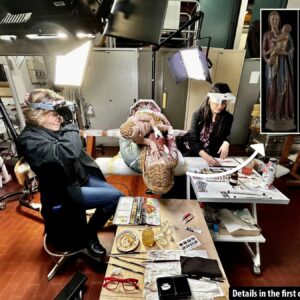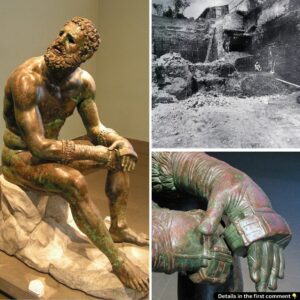In a remarkable turn of events, the Rijksmuseum in Amsterdam has become the new home for Gianlorenzo Bernini’s Triton (1653), a masterpiece that had remained hidden for centuries. After undergoing a painstaking restoration to remove layers of overpainting, this Baroque sculpture now stands as the first of its kind in the Netherlands. Art enthusiasts and historians alike are thrilled by this acquisition, as it offers a rare opportunity to witness Bernini’s brilliance in person. This addition to the museum’s collection marks a milestone in the world of art history.
The Journey of Bernini’s Triton
Triton, a 28-inch terracotta sculpture created in 1653 by the renowned Italian Baroque artist Gianlorenzo Bernini, has had quite the journey before arriving at the Rijksmuseum. For centuries, this work was hidden from public view, residing in the private collection of the Chigi family. The sculpture, which was created as a preparatory model for the larger marble statue featured in the Fontana del Moro at Piazza Navona in Rome, remained largely overlooked because of its overpainted surface. It was only in 2018 that a restoration process finally revealed the fine details of Bernini’s craftsmanship.
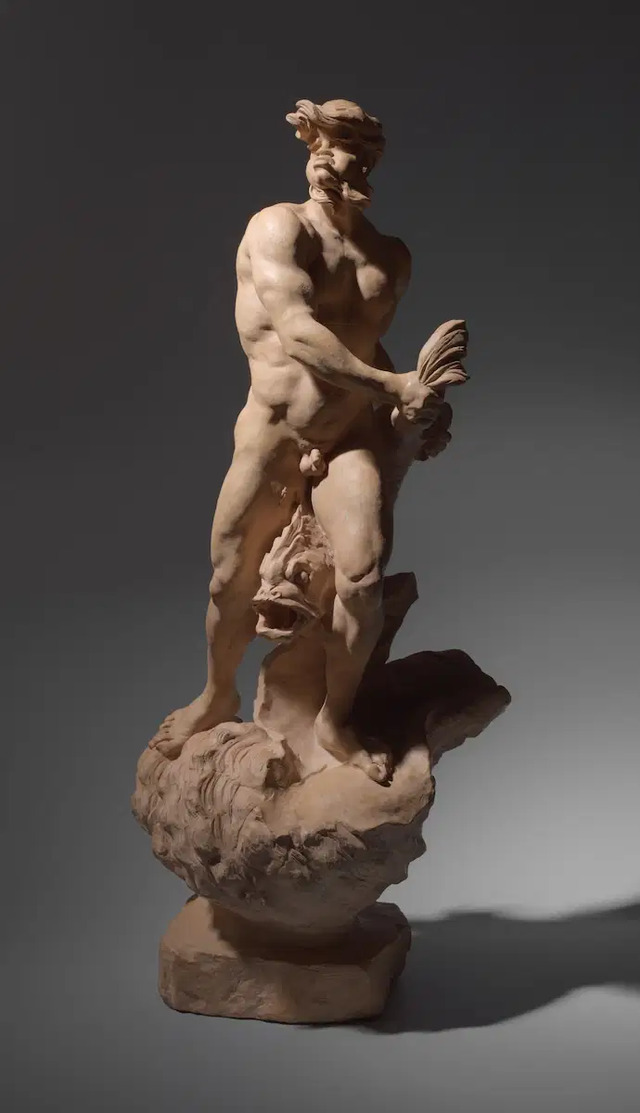
The Rijksmuseum’s acquisition of Triton on permanent loan is a monumental event for the institution, as it now holds the only sculpture by Bernini in the Netherlands. The sculpture was once part of the collection of the Chigi family, descendants of Cardinal Flavio Chigi, who had close ties with Bernini. Although the statue remained in private hands for generations, it was rediscovered and displayed at the museum’s 2020 exhibition Caravaggio–Bernini, before being placed on permanent loan for public viewing.
Video
Watch the video to see the Rijksmuseum receive a Bernini sculpture on permanent loan. This remarkable addition enhances the museum’s stunning collection!
Gianlorenzo Bernini: The Master of Baroque Sculpture
Bernini’s Triton is one of the finest examples of his extraordinary skill and dramatic flair, which reshaped the art of sculpture during the Baroque period. Known for his ability to create works full of life and emotion, Bernini was a master of capturing dynamic movement, which became a hallmark of his style. His sculptures, such as David (1623-24), Apollo and Daphne (1622-25), and The Ecstasy of Saint Teresa (1647-52), are celebrated for their energy and theatricality.
Born in Naples in 1598, Bernini’s work was primarily focused on sculpture and architecture, making him one of the most influential figures of the Baroque era. His commissions for the Catholic Church, such as the design of St. Peter’s Baldachin and the fountain designs in Piazza Navona, helped establish his reputation as the premier sculptor of his time. The Fontana del Moro, featuring Bernini’s Triton, was one of the many papal commissions he undertook, adding to the grandeur of Rome’s urban landscape.
The Creation of Triton
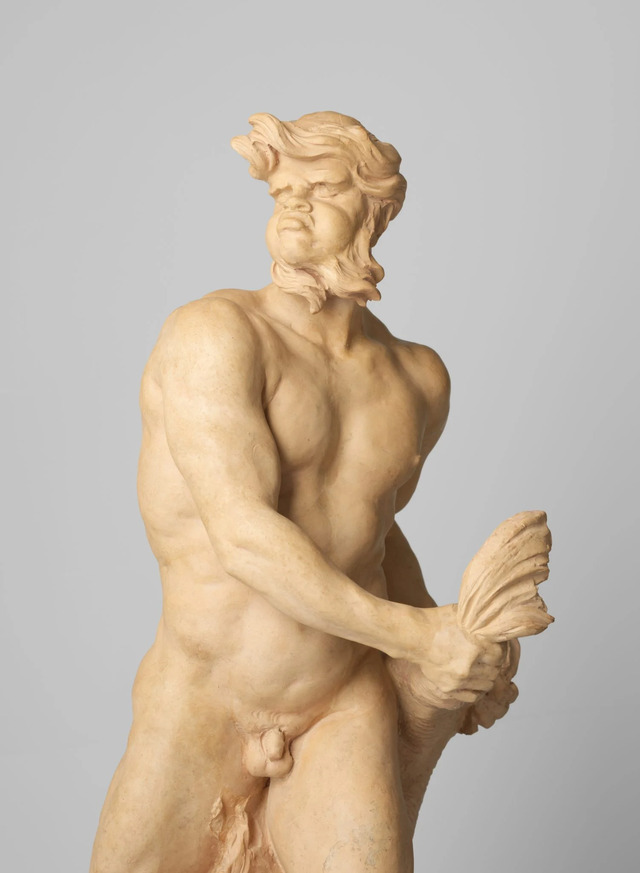
The Triton sculpture was created by Bernini as a study for the central figure of the Fontana del Moro, one of three fountains in Piazza Navona commissioned by Pope Innocent X in the 1650s. The sculpture depicts Triton, the Greek god of the sea, standing on a conch shell while clutching the tail of a large fish. The scene, which is alive with energy, is designed to capture the essence of movement, with Triton’s dynamic pose suggesting that he is being propelled by the wind. The work is a beautiful example of Bernini’s ability to infuse emotion and drama into his sculptures, imbuing even the smallest study with a sense of life.
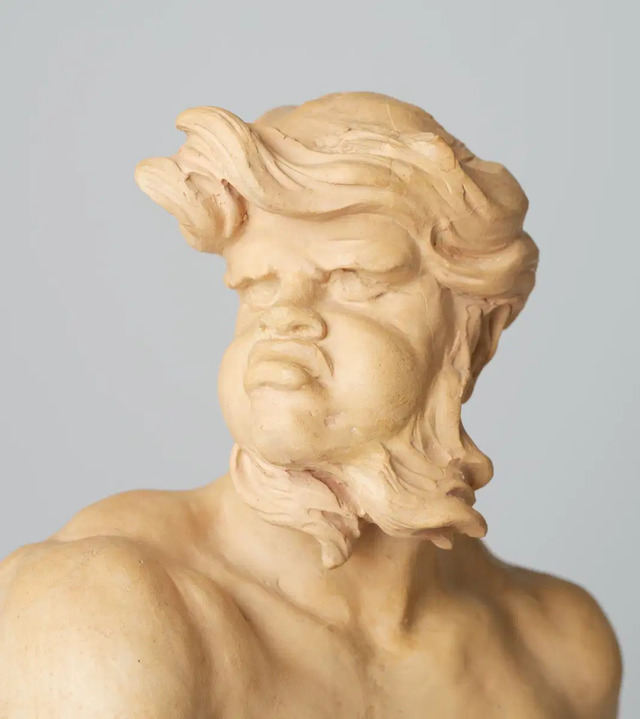
Bernini’s Triton was intended to serve as a preparatory study for the marble statue, which was later executed by Giovanni Antonio Mari, Bernini’s assistant. The terracotta study was never meant to be a public piece but instead was created as a model for reference. Unlike the marble version, which was polished and perfected, the terracotta sculpture retained more of its original raw energy and expressive detail.
Triton’s Role in Piazza Navona
Piazza Navona, one of Rome’s most famous squares, became the site of several monumental fountains designed by Bernini, which transformed the space into a grand artistic showcase. The Fontana del Moro, where Triton resides, is located at the southern end of the piazza and was intended to create a visual connection between the Pamphili Palace, located nearby, and the central Fontana dei Quattro Fiumi (Fountain of the Four Rivers). The design of the fountains, including the placement of Triton, was meant to convey movement and energy, with the sea god positioned in a way that seems to direct his attention toward the central fountain.
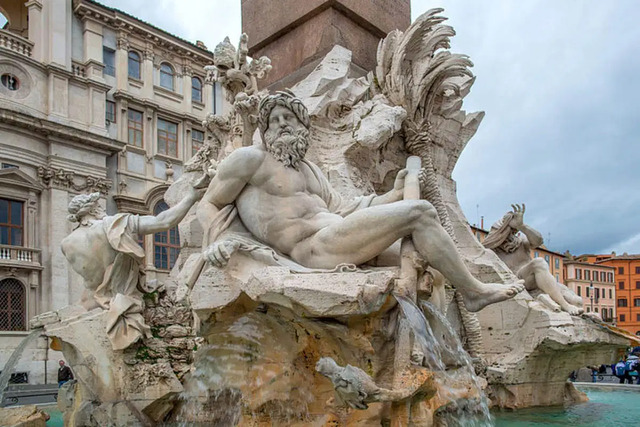
The Fontana del Moro was originally conceived by Bernini to symbolize the power of the sea and the wealth of the Papal State. Its dramatic design, with Triton struggling with a sea creature, was meant to evoke the force and unpredictability of the ocean. The inclusion of water spouting from the fish’s mouth added to the dynamic nature of the scene, with water symbolizing the ever-changing and powerful forces of nature.

The Hidden History of Triton
For centuries, Triton lay undiscovered in the private collection of the Chigi family. Over time, the sculpture became obscured by a thick layer of dark paint, which concealed its fine details and craftsmanship. It wasn’t until 2018 that restoration efforts began to remove the overpaint, revealing the extraordinary work of Bernini. The sculpture’s restoration uncovered the intricate details, including the sea god’s expressive face and the delicate movement of his body, allowing the work to be appreciated for the first time in its full glory.
The process of restoration and rediscovery was a significant moment for art historians and museum curators alike, as it allowed a lost masterpiece to be brought back into the public eye. The restoration also provided a deeper understanding of Bernini’s techniques, which had been largely obscured for centuries.
The Display of Triton at the Rijksmuseum
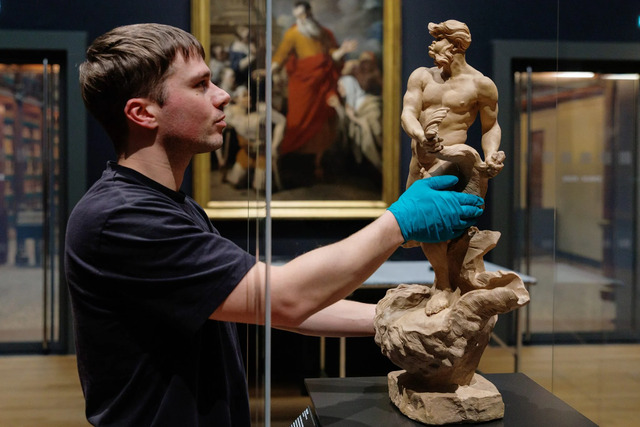
The Rijksmuseum’s acquisition of Triton marks the beginning of a new chapter for this remarkable sculpture. Displayed for the first time in the Netherlands, Triton now stands as a symbol of the museum’s commitment to preserving and showcasing the finest examples of Baroque art. The addition of this sculpture to the museum’s collection is a historic achievement, as it is the first Bernini sculpture to be permanently displayed in the country.
The museum’s director, Taco Dibbits, expressed his excitement about the acquisition, stating that Triton is “a truly historic addition to the collection” and emphasizing Bernini’s profound influence on the development of sculpture in the Netherlands. The sculpture’s placement in the museum offers visitors the chance to experience Bernini’s skill and creativity firsthand, and to gain a deeper appreciation for his work in the context of Baroque art.
Bernini’s Lasting Legacy
Bernini’s influence on Baroque art and architecture is immeasurable. His innovative approach to sculpture, characterized by dramatic movement, expressive emotion, and attention to light and shadow, has left a lasting mark on the history of art. His ability to create works that seem to come to life, full of energy and emotion, has captivated audiences for centuries.
The Triton sculpture, now on display at the Rijksmuseum, serves as a reminder of Bernini’s extraordinary talent and his ability to transform the art of sculpture. It is a testament to the continued relevance of Baroque art, and a tribute to the power of great artists to shape the course of history.
Video
Check out the video to explore Amsterdam’s best art museum, the Rijksmuseum. It’s home to some of the world’s most iconic artworks, making it a must-visit destination for art lovers!
Conclusion
The arrival of Bernini’s Triton at the Rijksmuseum is a momentous occasion for both the museum and the art world as a whole. After centuries of obscurity, this masterpiece is now being shared with the public, offering a rare opportunity to experience the genius of Gianlorenzo Bernini in person. As the only sculpture by Bernini in the Netherlands, Triton will undoubtedly become a highlight of the Rijksmuseum’s collection, drawing visitors from around the world to witness the power and beauty of Baroque art at its finest.

